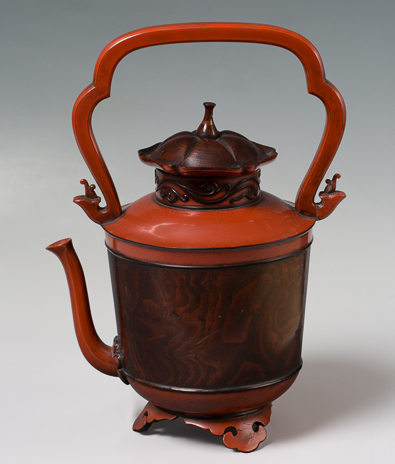The beauty of time

Negoro lacquer wares were produced in Negoro-ji, the head temple of the Shinai Shingon sect of Buddhism. During medieval times, Negoro utensils were used in shrines and temples related to Negoro-ji for everyday use and for ritual purposes. A very important part of enjoying Negoro ware is what Japanese call “wabi” aesthetic: these utensils are never adorned with excessive decoration that would compromise their functionality, while signs of wear and even flaws can be appreciated by people of refined taste. In fact, the cinnabar red layers of lacquer on these wares are intended to gradually wear away with use, revealing the black undercoat, as evidence that the pieces have lived a long life.
When Negoro-ware reached its highest popularity in the late medieval period, other decorations were developed as variations to the main style. Among them, urushi-e (or e-Negoro) is a technique that allowed adornment to enrich ritual items for special occasions or for a demanding patron as an alternative to the flat cinnabar-red of the Negoro-ware, at that time not yet worn by daily use. The technique of painting with lacquer was brought from China and then developed following the traditional Japanese aesthetic, essentially becoming one with Negoro lacquerware. Even if red Negoro items with black decorations are found, the background is generally black (kuro-Negoro) and the design is either in red or silver lacquer.
Copyright © 2016 - giuseppe piva - VAT: 05104180962

